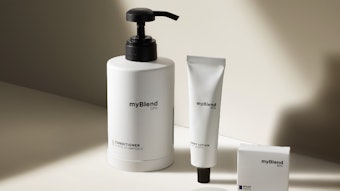
Major U.S. employers using incentives to promote employer-sponsored health and wellness programs rose from 62% to 71% between 2007 and 2008, according to a report released today. Also included is new data about what programs employers reward, how much they spend and what they expect in return for their investments.
This is the second year the survey was conducted by the ERISA Industry Committee (ERIC), the National Association of Manufacturers (NAM) and IncentOne Inc. Responses revealed a wide range in the value of incentives offered for a host of different programs. For instance, incentives for weight management programs ranged from $5 to $500, and for smoking cessation programs from a low of $5 to a high of $600. The average value of incentives per person per year ranged between $100 and $300, with an overall average of $192 per person per year.
“More than three out of four major employers are using health and wellness programs in an effort to rein in costs that continue to soar year after year,” said John Engler, president and CEO of NAM. “But trinkets and t-shirts aren't enough to motivate employees for the long term. Employers are keenly interested in innovative ways to lower costs and enhance productivity. Incentives are proving an effective tool to engage employees and keep them interested in these programs.”
Employers are experimenting with the types of incentives they offer, sometimes offering different incentives and amounts for different types of programs. While last year's results showed a definite skew towards offering premium reductions over other types of incentives, gift cards came out on top in 2008 as the most popular incentive employers offer, with premium discounts and cash incentives following closely behind.
The survey of 225 major U.S. companies employing 7.6 million employees also delved into employer expectation for ROI for health and wellness programs, finding that 83% of those who have measured are seeing program returns of better than break-even. The percentage of employers who have successfully measured ROI for their health and wellness programs almost doubled since last year, but still remains less than 30%.
Employers are using other measures to evaluate program success, such as completion of health risk assessments and program participation. And when it comes to incentives, employers are much more likely to reward program participation and completion than to reward employees for meeting specific program goals, such as smoking cessation or losing weight.
“More employers have learned that investment in their employees' health is smart--it brings a positive return," said ERIC president Mark Ugoretz. "But directing resources towards workers' health must be balanced with an understanding of how incentives work within these programs. This survey shows that employers are serious about understanding the business case for incentives for employee engagement and participation. They want to make the most of these programs that can both lower costs and improve productivity."
“The survey findings reveal that use of incentives among large employers is broad, but the science of incentives management is still evolving,” said Michael Dermer, president and CEO of IncentOne. “Success in health and wellness programs will require employee engagement and motivation over time. That suggests a need for a combination of incentive design strategies and effective employee communication techniques that are tailored to a company and its employee culture.”
NAM is one of the nation's largest industrial trade associations, representing small, medium and large manufacturers in every industrial sector and in all 50 states. ERIC represents some of the nation's largest employers who provide comprehensive health, retirement and compensation benefits to tens of millions of employees and their families. Together, NAM and ERIC represent more than 15 million total employees. The Web-based survey was sent to members of both organizations.
The survey was conducted to determine employer adoption of incentives for health and disease management programs, and to assess the nuances of incentives they are using: the types of incentives currently used, the programs they use them for and the amount they are paying. The survey also sought to understand employer expectations for program ROI and challenges employers faced in implementing and operating these programs.










